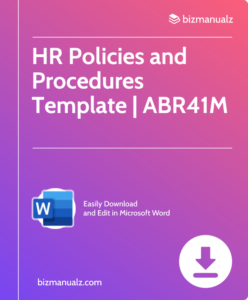What Are Best Practices For An Employee Manual?

Today’s quick-moving, ever-changing business environment necessitates an effective employee manual. It works like a guide, showing employees the policies, procedures, and expectations of the company. It creates a unified work atmosphere and makes sure everyone’s on the same page. What are best practices for an employee manual?
Employee Handbook, Employee Manual, or Manual Del Empleado
The employee handbook or manual should start with a clear intro that explains the organization’s mission, values, and goals. It lets staff align with the principles, and gives insight into the company’s culture and vision. The intro should also list key details like organizational structure, reporting lines, and regulatory/legal requirements. It must be concise so employees can understand their roles and duties.
In addition, it should introduce anti-discrimination policies, dress code guidelines, or social media protocols. By spelling out the policies, employees know what is required of them.
A few suggestions for the intro section:
- Use language that resonates with employees, but stay professional. Choose words that engage readers.
- Don’t overwhelm them with too much info; break it down into sections/bullet points.
- Be clear in sentence structure and formatting.
By applying these tips and crafting a captivating intro, you’ll make a strong foundation for a peaceful work environment. This way, your employees will have all the info they need to contribute to the organization’s success.
Importance of an Employee Manual
An employee manual is essential for any organization. It’s like a guidebook, providing info on human resource policies, procedures, and expectations. By giving clear and consistent details, it ensures employees know their rights and duties, helping to create a positive work environment.
The manual also establishes a uniform approach. It gives a structure for consistent judgement and fairness when treating all workers. This stops any potential legal issues from inconsistent practices, and makes sure everything is transparent.
The manual is a great resource for new and old employees. It has data on benefits, leave, code of conduct, and other useful information. This reduces confusion and allows employees to make educated decisions.
Finally, the manual encourages communication between management and staff. It can include ways to handle concerns or feedback in a professional way. This builds trust and encourages improvement within the organization.
Key Components of an Employee Manual

employment policies
Employee manuals are vital for any organization. They provide vital info and rules for employees, acting as a guidebook for workplace conduct. Here are five components that should be included:
- Policies & Procedures: Outline company policies and procedures, so workers understand their rights, duties, and expectations. Includes topics like attendance, clothing, conflict resolution, and ethics.
- Code of Conduct: Encourage a positive work environment, emphasizing professionalism, respect, and integrity. Give specific examples to explain what’s acceptable and unacceptable employee conduct.
- Employee Benefits: Explain compensation packages, health insurance, retirement plans, and other company perks.
- Health & Safety Guidelines: Protect employees’ wellbeing. Includes info on emergency procedures, accident reporting, equipment use, ergonomics, and hazard-free environment.
- Communications: Establish effective communication channels. Discuss team meetings, feedback mechanisms, and internal newsletters or bulletins.
Keep the language in the manual simple and clear to understand. Update the manual regularly with any changes or additions. We saw employee morale and productivity improve after implementing a well-structured employee manual. It provided clarity and resolved conflicts quickly, leading to a more harmonious workplace.
Employee Manual Implementation and Distribution
Creating and distributing an employee manual is a must for smooth operations. Here are best practices to follow:
- Clearly explain the purpose and scope to help employees know what to expect.
- Create an easy-to-navigate format, with headings, bullets, and subheadings.
- Include policies and procedures like code of conduct, safety, leave, anti-discrimination, and disciplinary.
- Use language that is simple and jargon-free.
- Keep it up-to-date with any changes.
- Make sure all employees can access it.
Make sure to customize the manual to your organization’s needs. This ensures relevancy and effectiveness.
Crazy fact: Employee manuals have been around for ages. Big and small companies use them to set expectations, comply with rules, and build a positive work culture.
Best Practices For An Employee Manual
It is vital to take several key factors into consideration when assessing best practices for an employee manual. Firstly, it should be comprehensive and provide precise guidelines to employees about company rules and processes. This ensures uniformity and avoids confusion within the organization.
Moreover, the manual must be frequently updated to include any changes in company policies or applicable laws. This shows a commitment to keeping up with current trends and guarantees that employees are informed about any modifications that could affect their work.
Furthermore, it is necessary to add sections to the manual which discuss employee rights and responsibilities, workplace safety, discrimination, and harassment policies. These parts create a positive work atmosphere and assist in protecting employees as well as the organization.
Additionally, the employee manual should be easily accessible to all employees. Offering a digital version on the company intranet or through email transmission allows for easy referencing and verifies that all staff members have access to the most up-to-date version.
Lastly, businesses should stimulate feedback from employees regarding the content and clarity of the manual. This feedback can identify any omissions or areas needing improvement, ultimately boosting overall comprehension and conformity.
A real story related to this topic involves a company that did not update their employee manual for many years. As a consequence, numerous alterations in laws and regulations were not shown in the document. This resulted in misunderstandings among employees who were not aware of recent changes. Therefore, the company experienced legal problems due to not meeting updated regulations.
To stop such issues, it is essential for organizations to prioritize maintaining an updated and thorough employee manual. By following the best practices during its formation and upkeep, companies can efficiently communicate expectations while protecting both themselves and their employees.
Frequently Asked Questions
1. What should be included in an employee manual?
It is important for an employee manual to include policies and procedures, such as dress code, attendance, and code of conduct. It should also provide information about employee benefits, leave policies, and company culture.
2. How often should an employee manual be updated?
An employee manual should be regularly reviewed and updated to ensure it reflects the current practices and policies of the company. It is recommended to review and update the manual at least once a year or whenever there are significant changes in the company policies.
3. Should an employee manual be easily accessible to all employees?
Yes, an employee manual should be easily accessible to all employees. It can be shared electronically through email or intranet, or as a hard copy distributed to all employees. Accessibility ensures that employees can refer to the manual whenever they need to clarify company policies and procedures.
4. How can an employee manual contribute to a positive work environment?
An employee manual can contribute to a positive work environment by providing clear guidelines on behavior, expectations, and policies. It helps create consistency and fairness among employees, reduces misunderstandings, and promotes a sense of trust and transparency within the organization.
5. Are there any legal requirements for an employee manual?
While there are no specific legal requirements for an employee manual, it is advisable to include policies and procedures that comply with relevant labor laws, non-discrimination laws, and any other applicable regulations specific to the industry or country of operation.
6. How can an employee manual be effectively communicated to new hires?
New hires should be given a copy of the employee manual during their onboarding process. It is important to schedule a dedicated session to go through the manual, highlighting key policies and procedures. This ensures that new employees have a clear understanding of the company’s expectations from the start.

















Leave a Reply